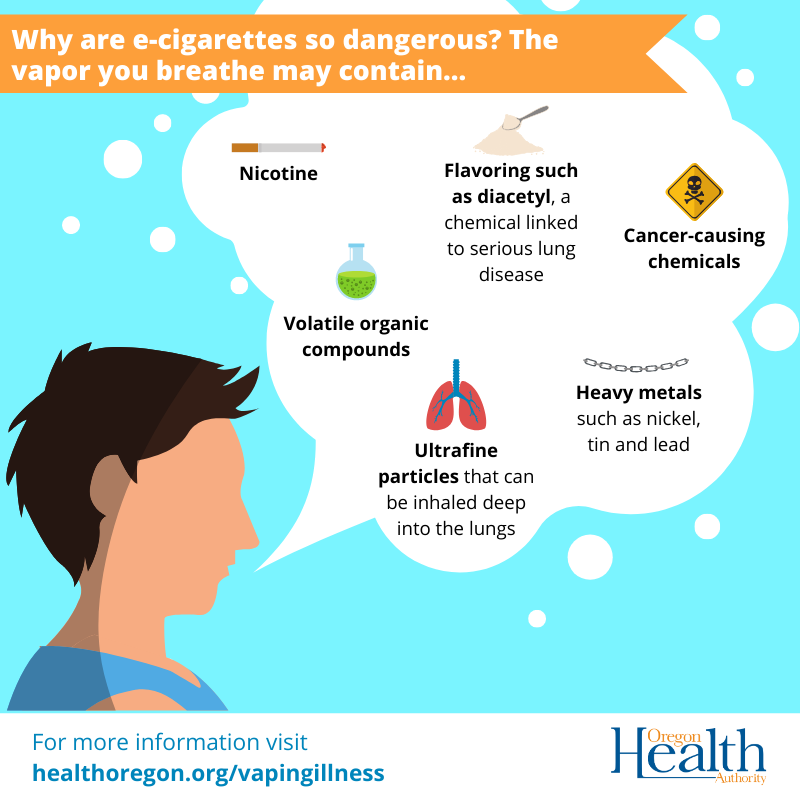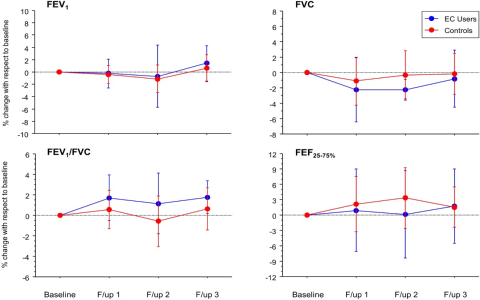Electronic cigarettes, or e-cigarettes, are battery-operated devices that heat a liquid (e-liquid) to produce an aerosol that is inhaled by the user. While often marketed as a safer alternative to traditional cigarettes, they are not without significant health risks.
Key Health Effects and Concerns
The aerosol from e-cigarettes is not simply water vapor. It contains nicotine, flavorings, and various other chemicals, many of which are harmful.

- Respiratory System: Inhaling e-cigarette aerosol can lead to lung inflammation and damage. Ingredients like propylene glycol and glycerin, when heated, can form irritants. Some flavorings have been linked to serious lung diseases, such as bronchiolitis obliterans (“popcorn lung”) in certain occupational exposures, raising concerns about their inhalation via e-cigarettes. E-cigarette use has also been associated with an increased risk of asthma exacerbations and chronic bronchitis symptoms. Cases of severe lung injury (EVALI) have been reported, primarily linked to THC-containing products with vitamin E acetate, but highlighting the potential for acute lung damage from inhaled substances.
- Cardiovascular System: Nicotine, a primary component in most e-liquids, is a highly addictive substance that adversely affects the cardiovascular system. It can increase heart rate and blood pressure, constrict blood vessels, and may contribute to an increased risk of heart attack and stroke over time. Even e-cigarettes without nicotine can contain particulate matter and other chemicals that may impact cardiovascular health.
- Brain Development: Nicotine exposure during adolescence, a critical period for brain development, can disrupt the growth of brain circuits that control attention, learning, and mood. It can also increase the risk for future addiction to other drugs.
- Nicotine Addiction: The high concentration of nicotine in many e-cigarette products can lead to rapid addiction, particularly among young users. This addiction can be difficult to overcome and can prime the brain for addiction to other substances.
- Exposure to Harmful Substances: E-cigarette aerosol can contain volatile organic compounds (VOCs), ultrafine particles, heavy metals (such as nickel, tin, and lead), and carcinogens like formaldehyde and acetaldehyde, which are formed when the e-liquid is heated. The long-term effects of inhaling these substances are still being studied but are a significant concern.
- Pregnancy Risks: E-cigarette use during pregnancy is unsafe. Nicotine is a developmental toxicant that can harm the developing fetus, impacting brain and lung development.
- Accidental Poisoning: E-liquids, especially those containing nicotine, are toxic if ingested or absorbed through the skin. There have been cases of poisoning in children and adults.
Comparison with Combustible Cigarettes
While e-cigarette aerosol generally contains fewer toxic chemicals than the smoke from combustible cigarettes, this does not mean e-cigarettes are safe. They expose users to different harmful substances and still pose significant health risks, particularly to young people, pregnant women, and adults who do not currently use tobacco products.
Long-Term Effects
E-cigarettes have not been available long enough for researchers to fully understand their long-term health consequences. Ongoing research is crucial to determine the full extent of risks associated with prolonged use.










